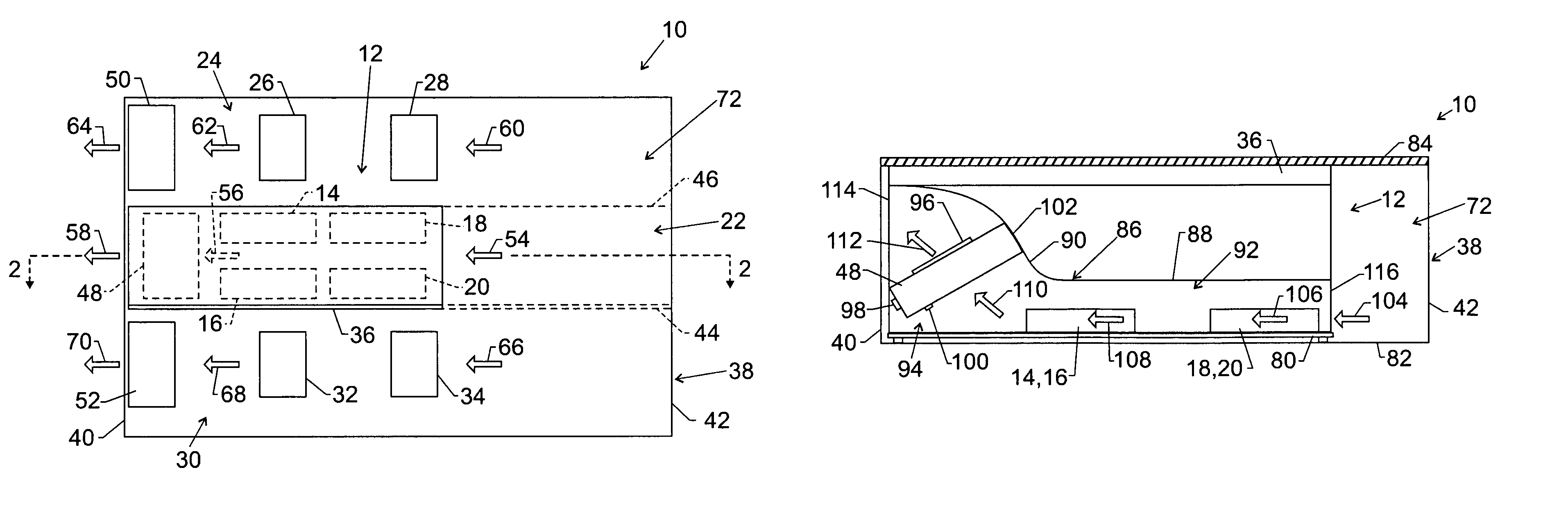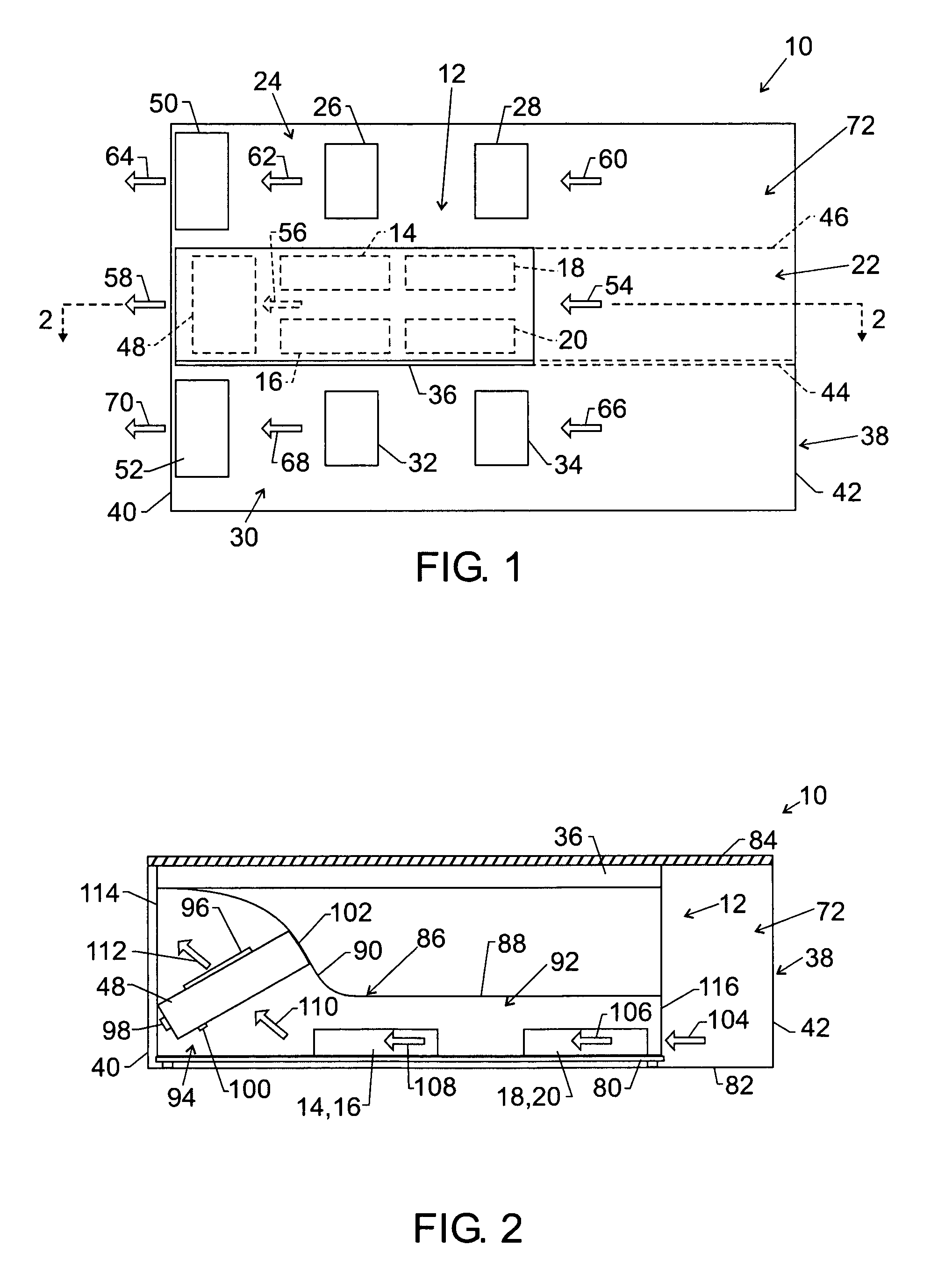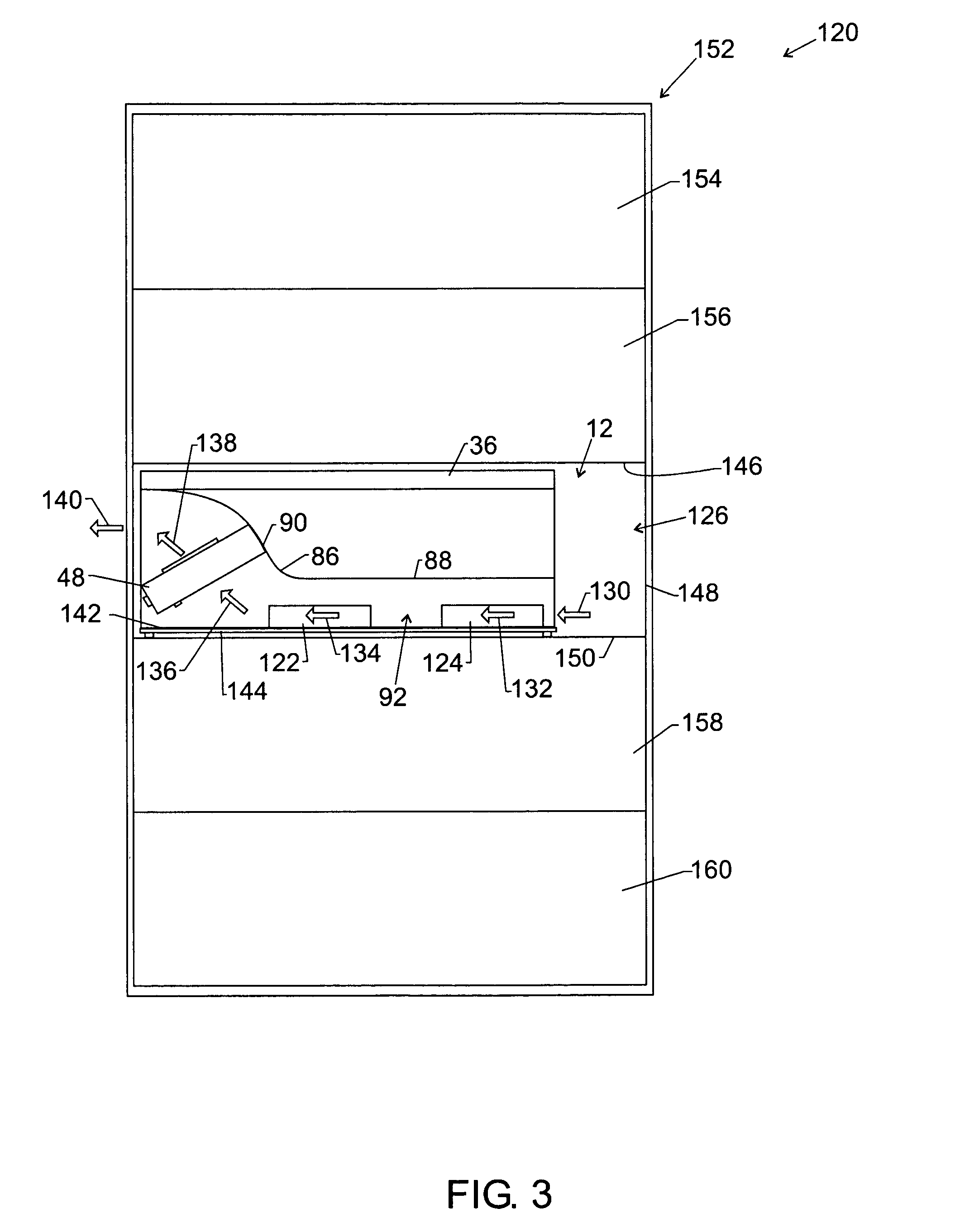System and method for cooling components in an electronic device
a technology of cooling components and electronic devices, applied in the direction of insulated conductors, power cables, cables, etc., can solve the problems of high temperature of certain components of electronic devices, insufficient cooling of certain components of fans, and particularly problematic lack of circulation
- Summary
- Abstract
- Description
- Claims
- Application Information
AI Technical Summary
Benefits of technology
Problems solved by technology
Method used
Image
Examples
Embodiment Construction
[0016]FIG. 1 is a diagrammatical top view of a system for cooling components of an electric device. The system includes an electronic device 10 having a duct 12 disposed over electronic components 14, 16, 18, and 20 in accordance with embodiments of the present invention. As discussed in further detail below, the duct 12 is configured to isolate different component regions, including a first component region 22 having the electronic components 14, 16, 18, and 20, a second component region 24 having electronic components 26 and 28, and a third component region 30 having electronic components 32 and 34. Moreover, the illustrated duct 12 is configured to focus an airflow around the electronic components 14, 16, 18, and 20. In certain embodiments, the electronic device 10 is a computer, such as a notebook computer, a tablet personal computer, a desktop computer, a server, a network device, or another processor-based device. Embodiments of the electronic components 14, 16, 18, 20, 26, 28...
PUM
 Login to View More
Login to View More Abstract
Description
Claims
Application Information
 Login to View More
Login to View More - R&D
- Intellectual Property
- Life Sciences
- Materials
- Tech Scout
- Unparalleled Data Quality
- Higher Quality Content
- 60% Fewer Hallucinations
Browse by: Latest US Patents, China's latest patents, Technical Efficacy Thesaurus, Application Domain, Technology Topic, Popular Technical Reports.
© 2025 PatSnap. All rights reserved.Legal|Privacy policy|Modern Slavery Act Transparency Statement|Sitemap|About US| Contact US: help@patsnap.com



